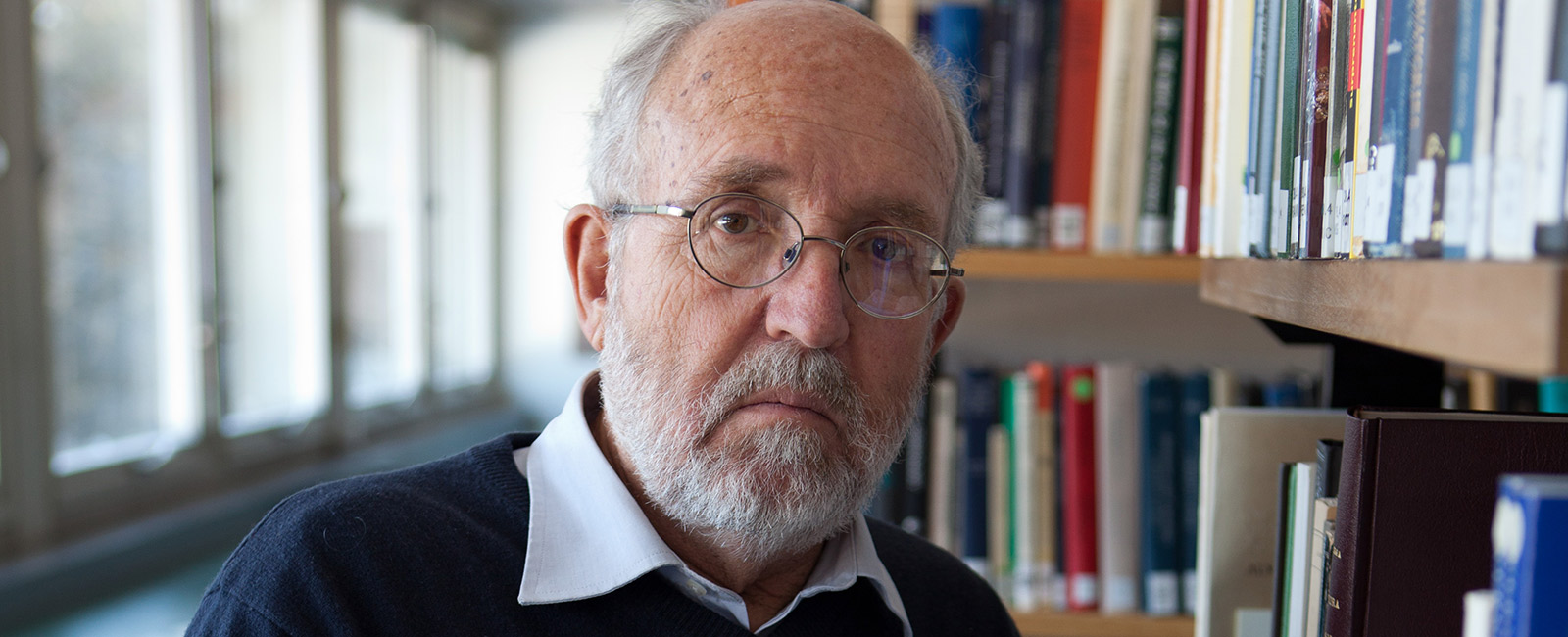The BBVA Foundation Frontiers of Knowledge Award in Basic Sciences goes to Mayor and Queloz, discoverers of the first exoplanet
The BBVA Foundation Frontiers of Knowledge Award in the Basic Sciences category has gone in this fourth edition to Swiss astrophysicists Michel Mayor and Didier Queloz “for their pathbreaking development of new astronomical instruments and experimental techniques that led to the observation of planets outside the solar system,” in the words of the jury’s citation.
24 January, 2012
This contribution facilitated “the discovery, in 1995, of a giant planet orbiting another star, which spawned a revolution in astronomy. Today, more than five hundred exoplanets are known and the first direct measurements of some of their atmospheres have been obtained,” the citation continues.
There can be no doubt that Mayor and Queloz’s breakthrough has expanded the frontiers of knowledge. When they first started looking for planets around sun-like stars, few astrophysicists believed it was feasible to detect a small, dark object moving close to another – its star – of enormous size and brilliance. But the two men invented and developed a technique known as radial velocity, based on the Doppler effect, to detect such objects by indirect means. It works by examining the star’s light for tell-tale signs of changes in its movement caused by the gravitational pull between planet and star.
It is with this method that science has found most of the extrasolar planets catalogued to date. In addition, Mayor and Queloz were instrumental in developing HARPS or “the world’s leading planet discovery machine” as the jury calls it; the most productive search tool based on their technique. And they have also been involved in the emerging “transit method”, in which planets are spotted by the slight dimming of a star’s light as the orbiting body crosses its disk. This method has already yielded the first detection of a rocky extrasolar planet.
“I feel extremely grateful and honored to have this prize,” said a surprised Michel Mayor, who heard the news while taking part in a workshop at the famed radio telescope in Arecibo, Puerto Rico. Queloz, his doctorate student when they discovered the first signal of a planet orbiting the star 51 Pegasi, returned to Geneva from Paris after getting the jury’s call: “I feel very proud. For me, it’s a recognition of the work Michel and I have been doing for almost 20 years, which has been a game changer in astrophysics.”
Both remember the announcement of their finding as just one in a chain of tumultuous events. As Queloz describes it: “At that time there were very few people doing this, it was a kind of bizarre, weird project. We had built this really precise machine and thought it was going to take years to detect a planet, then suddenly after a couple of months, there was the first signal. However, what we were observing didn’t fit with any known planet in the solar system. At first I thought I was mistaken. But Michel has the kind of mind that is ready for the unexpected, and that was essential to our success.”
Even so, Mayor decided it was best to wait until the star could be observed again, one year later. “In July 95 we repeated our measurements and got exactly the same signal. It was then we knew that we had really a planet,” he recalled during yesterday’s conversation.
Their initial wariness had to do with the type of planet detected; with a mass similar to Jupiter but, unlike the gas giants of our solar system, circling just a short distance from its star. 51 Pegasi b – as they baptized it – has an orbit of just four days. As it turns out, this is true of the vast majority of planets detected since, but at that time, as Mayor relates, “it was a huge surprise, we were saying ‘what is this?’”
In Mayor’s view, “One pending scientific goal is to understand the physics of the formation of these planets.” Though in the long term, “what really matters, the big, big challenge is to understand if life is a common feature in the universe. I don’t know when we might know whether a given planet sustains life, because these are very difficult measurements that can probably only be done from space. But we also know that life affects the chemical composition of a planet’s atmosphere. I am sure space agencies will make this a priority objective.”
International jury
The jury in this category was chaired by Theodor Hänsch, 2005 Nobel Physics laureate, Professor of Physics at LMU Munich and Director of the Department of Laser Spectroscopy at the Max Planck Institute of Quantum Optics (Garching, Germany), with Avelino Corma, Research Professor in the Instituto de Tecnología Química (CSIC– Universidad Politécnica de Valencia, UPV) acting as secretary. Remaining members were Douglas Abraham, Professor of Statistical Mechanics in the Rudolf Peierls Centre for Theoretical Physics at Oxford University (United Kingdom); Ignacio Cirac, Director of the Theory Division at the Max Planck Institute of Quantum Optics (Garching, Germany) and BBVA Foundation Frontiers of Knowledge laureate in Basic Sciences in the first edition of the awards; Hongkun Park, Professor of Chemistry and Chemical Biology and of Physics at Harvard University (United States); Martin Quack, Professor of Physical Chemistry at ETH Zurich (Switzerland), and Sandip Tiwari, Charles N. Mellowes Professor in Engineering at Cornell University (United States).


